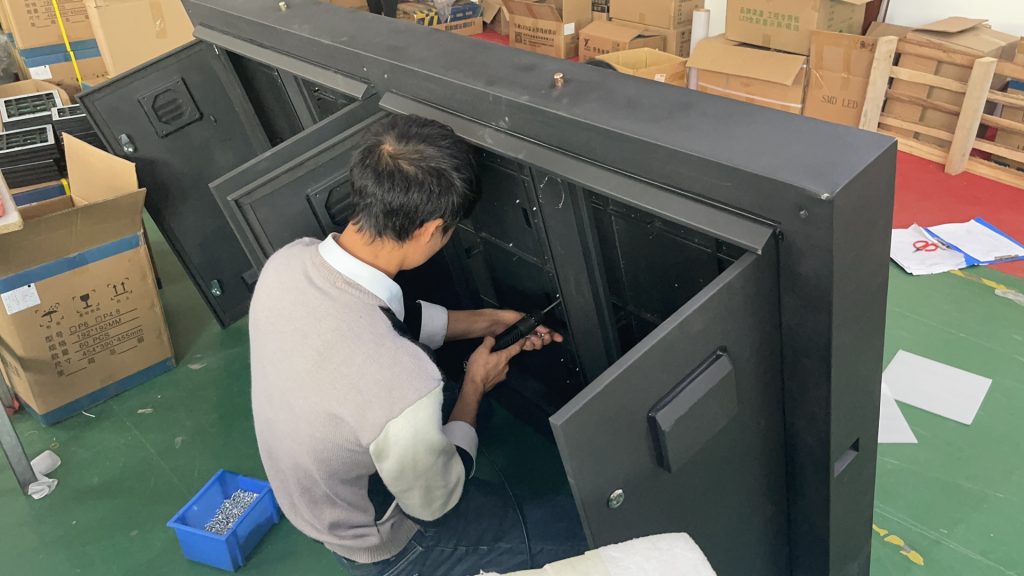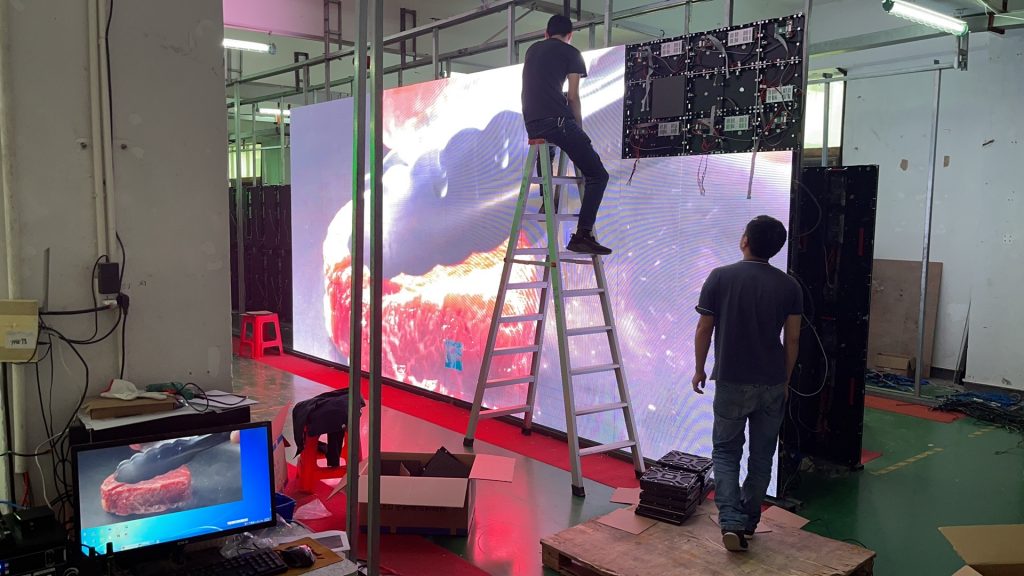Top Ten Common Faults and Emergency Solutions of LED Displays
As a common electronic product, LED display screens will inevitably have some small problems in use, and if you ask professionals to solve these small problems, it will cost as little as a few hundred dollars and as much as thousands of dollars. In fact, we only need Just move your finger to fix it.
We have listed the top ten common faults and emergency solutions of LED display screens for you. After understanding the common faults and emergency solutions of these display screens, you don’t have to worry too much about the temporary faults of the display screen, because you can completely solve them, or you can save a small fee.
01 The display screen does not work, the green light of the sending card flashes (made into a retractable type)
1. Possible reasons for failure:
1) The screen is not powered;
2) The network cable is not connected properly;
3) The receiving card cannot supply electricity or the voltage supplied is too low;
4) The LED sending card is damaged;
5) The signal transmission intermediate equipment is connected or faulty (such as: function card, optical fiber transceiver box);
2. Troubleshooting methods:
1) Check to confirm that the power supply of the screen body is normal;
2) Check and reconnect the network cable;
3) Ensure that the DC output power supply of the power supply is 5-5.2V;
4) Replace the sending card;
5) Check the connection or replace the function card (optical fiber transceiver box);

02 The display screen does not work and the green light of the sending card does not flash
1. Possible reasons for failure:
1) DVI or HDMI cable is not connected properly;
2) The copy or expand mode is not set in the graphics card control panel;
3) The software chooses to turn off the power of the large screen;
4) The sending card is not inserted in place or there is a problem with the sending card;
2. Troubleshooting methods:
1) Check the DVI cable connector;
2) Reset the copy mode;
3) The software chooses to turn on the power of the large screen;
4) Re-insert the sending card or replace the sending card;
03 Prompt “big screen system not found” when starting
1. Possible reasons for failure:
1) The serial cable or USB cable is not connected to the sending card;
2) The COM or USB port of the computer is broken;
3) The serial port cable or the USB data transmission cable is damaged;
4) The LED sending card has been damaged;
5) The USB driver is not installed
2. Troubleshooting methods:
1) Confirm and connect the serial cable;
2) Replace the computer;
3) Replace the serial cable;
4) Replace the sending card;
5) Install the new version of the software or install the USB driver separately;

04 The bar with the same height as the light board does not display or partially does not display, lack of color
1. Possible reasons for failure:
1) The flat cable or DVI cable (applicable to submarine series) is not in good contact or disconnected;
2) There is a problem with the output of the former or the input of the latter of the display panel at the junction
2. Troubleshooting methods:
1) Re-plug or replace the cable;
2) First determine which display module is faulty and then replace it for maintenance;
05 Some modules (3-6 pieces) are not displayed
1. Possible reasons for failure:
1) Power protection or damage;
2) The AC power cord is not in good contact
2. Troubleshooting methods:
1) Test to confirm that the power supply is normal;
2) Reconnect the power cord;

06 The whole box is not displayed
1. Possible reasons for failure:
1) The 220V power supply line is not connected properly;
2) There is a problem with the transmission of the network cable;
3) The receiving card is damaged;
4) HUB board is misplaced
2. Troubleshooting methods:
1) Check the power supply line;
2) Confirm the replacement of the network cable;
3) Replace the receiving card;
4) Re-insert the HUB;
07 The whole screen is full of flowers, pictures and shadows
1. Possible reasons for failure:
1) The driver loader is incorrect;
2) The network cable of the computer and the screen are too long or the quality is not good;
3) The sending card is broken
2. Troubleshooting methods:
1) Re-operate to load the receiving card file;
2) Shorten the length of the network cable or replace it;
3) Replace the sending card;
08 The entire display shows the same content for each display unit
1. Possible reasons for failure:
Display connection file not sent
2. Troubleshooting methods:
Re-set to send the screen-connected file, and insert the network cable connected to the computer to the output port of the sending card near the indicator light when sending;
09 The display brightness is very low and the displayed image is blurred.
1. Possible reasons for failure:
1) Error in sending card program;
2) The function card setting is incorrect
2. Troubleshooting methods:
1) Restore the default settings of the sending card and save them;
2) Set the minimum brightness value of the display monitor to above 80;
10 Shaking or ghosting of the whole screen
1. Possible reasons for failure:
1) Check the communication line between the computer and the large screen;
2) Check the DVI cable of the multimedia card and the sending card;
3) The LED sending card is damaged
2. Troubleshooting methods:
1) Replug or replace the communication cable;
2) Punch and insert the DVI cable to reinforce;
3) Change the sending card and try again.
The above are the “Top Ten Common Faults and Emergency Solutions of LED Displays” carefully selected by us. I believe that the above introduction can help you troubleshoot and solve most of the LED display faults.
If the above problems do not help you, then some circuit boards may be damaged, and the damaged LED modules can be sent back to the manufacturer for repair.
